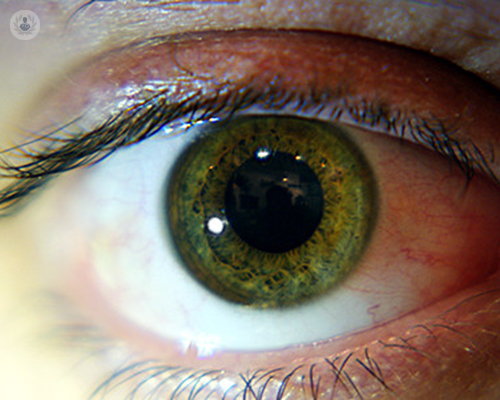
Correct myopia, astigmatism, long and short-sightedness and cataracts in a single operation – the toric intraocular lens
This simple procedure is possible thanks to the implantation of a multifocal toric intraocular lens that is the result of many years of research and development in the field of ophthalmology.

The multifocal diffractive toric intraocular lens (iol) is the latest contribution in the field of refractive surgery for patients who do not want to wear glasses, and who have astigmatism. This technology is aimed at patients who have previously enjoyed emmetropic sight (perfect vision), but have developed long-sightedness (presbyopia or hypermetropia) or short-sightedness (myopia). Presbyopia usually develops after 45 years of age; a little earlier in cases of hypermetropia and somewhat later for myopia.
What are multifocal iols (intraocular lenses)?
Thanks to their variety and design, the toric intraocular lenses offer different ranges of vision, adapting to the physiological needs and preferences of each patient. They are lenses with top quality technical features like bio-adhesion to the capsular bag (the membrane that surrounds the natural lens) and the filtering of the UV and blue light. The toric intraocular lenses have all the advantages of multifocal technology, plus they correct astigmatism, long-sightedness and short-sightedness.
How does iol treatment for astigmatism work?
The treatment consists of replacing the original lens, through a minimally invasive procedure, with a permanent diffractive intraocular lens, with two foci, one for distant objects more than 4 metres away, and another for nearby objects, about 40 centimetres away.
The exchange of the natural lens with a multifocal toric iol is performed through a 2mm wide incision that closes on its own without the need for any sutures. After 48 hours the incision is completely sealed. In addition, the procedure requires only local anaesthetic. Patients can leave the outpatient clinic 30 minutes after treatment and resume their normal activities. The whole process takes little more than 2 hours. The risks of this procedure are those inherent in any surgical procedure – basically, the risk of infection. Although the use of state-of-the-art antibiotics minimises it, it still exists and, therefore, the process requires the proper supervision of trained and skilled professionals.

